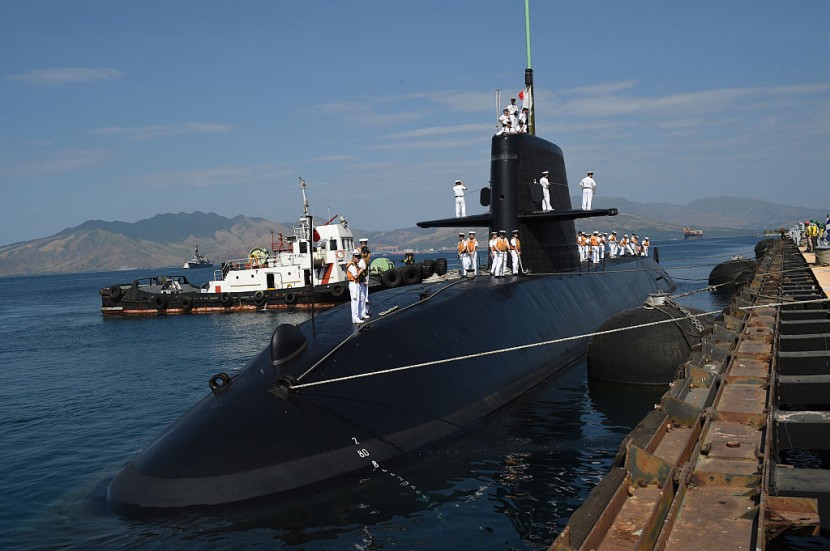
The next generation Taigei-class submarine, the successor of the Sōryū diesel-electric attack submarines, is powered by Lithium-ion batteries. Some countries have non-nuclear subs using electricity. Instead, innovations in such systems have been practical for powering submarines.
Next-generation Taigei-class submarine
Nuclear subs have advantages, especially for nations that can afford it, but using diesel-electric when employed correctly can bring down the most vessels.
One example is an electric boat that could escape detection and sink an aircraft carrier in drills, a US supercarrier at that.
The new Japanese boat is the next of its class to diesel-electric with power stored on Lithium-ion batteries, the second vessel that will feature improvements, reported the Nationalist Interest.
Launched at the Kawasaki Heavy Industries shipyard in Kobe, the Hakugei, or White Whale, is part of the Taipei-type first seen 2018. Compared to other subs in the Japan Maritime Self-Defense Force (JMSDF), which uses lead-acid batteries as power cells, they employ better Lithium-ion batteries. Until the introduction of Hakugei, most were not Li-ion that came with more advantages, cited Defense News.
Li-ion power cells store more energy and more power generated when used, with more power output allowing more performance for the Taigei. One implication is it can go farther in the distance and travel faster underwater.
Testing the system in the 2000s has revealed less maintenance and faster charges that lead to power cells. It lessens the time the submarines near to surface at times with the next generation Taigei-class.
New Taigei-class submarine uses Lithium-Ion batteries
Before Taigei was constructed, the Sōryū diesel-electric type had two boats equipped with the same power source. They are the Ōryū and Tōryū that has the same power source, Li-ion cells. But, Ōryū got it first, noted Popular Mechanics.
One of the hidden details of the new sub is that the batteries are top secret and advanced, allowing more energy-packed per cell for a greater range. Also, it is heavier than the Sōryū but less noisy compared to it.
Imbued with a stealthier function, the designers packed it with more advanced sonar, even other upgrades to its components. It can fire the US-made harpoon ship killer missiles, with the staple of Type 89 torpedoes.
Hakugei debuted one year after Taigei, the lead Taigei-class vessel. The boat would go through the testing phase and building before entering the Japan Maritime Self-Defense Force around March 2023.
The first boat, Taigei, will be ready for service in 2022, where the tech will be tested and evaluated. Hakugei will be followed by four more submarines to be constructed, and a third started in 2020.
Japanese naval forces are modernized, and the new Hakugei will be the front of the submarine forces as military assets expand.
This is a reaction to China's assertiveness and North Korea's threat which are reasons for these actions. Traditionally hesitant of risking Beijing's wrath, Japanese authorities took the unprecedented step of openly declaring their backing of Taiwan in summer.
Chinese foreign ministry spokesperson Wu Qian warns Tokyo to stick with its own business, not bother with Taiwan. Earlier, Japan's deputy defense minister, Yasuhide Nakayama, said Japan should assist Taiwan.
The next generation Taigei-class will be another asset to the Japanese Defense Force to allow another dimension of undersea combat.
Related Article: Biden Taunted by Chinese, Russian Fleet Passing Through Japan Strait to Test Resolve of the US









